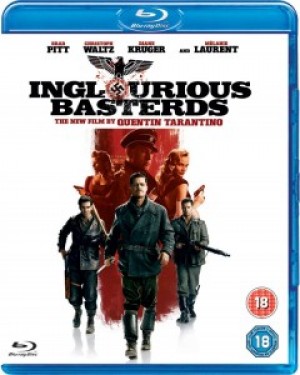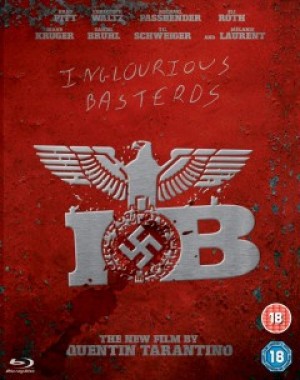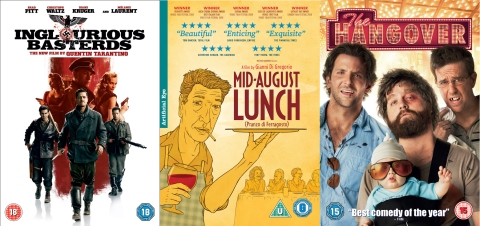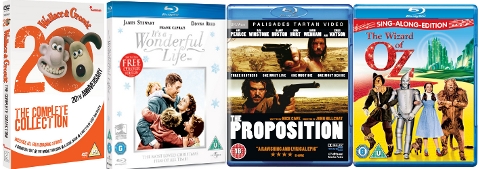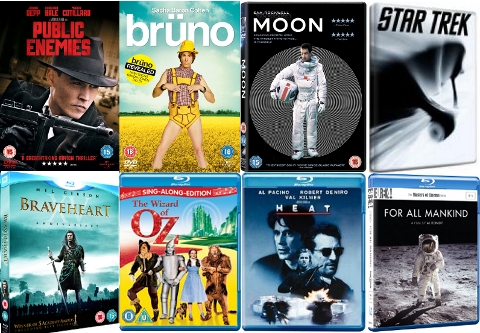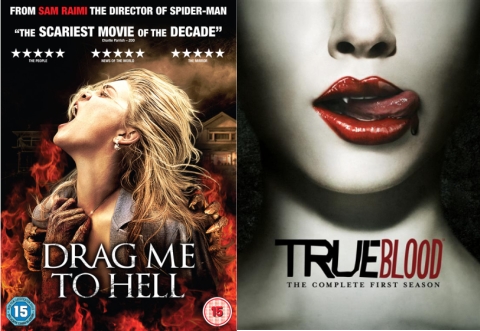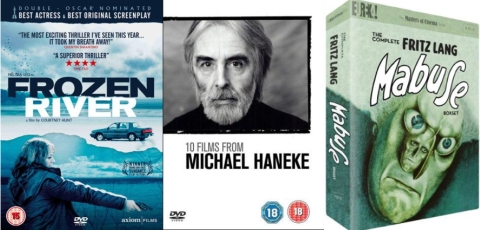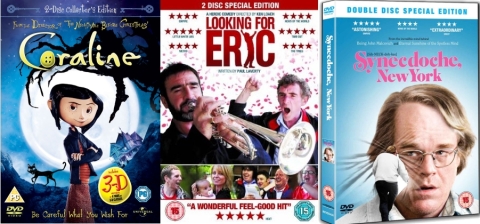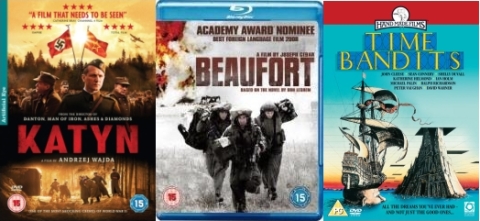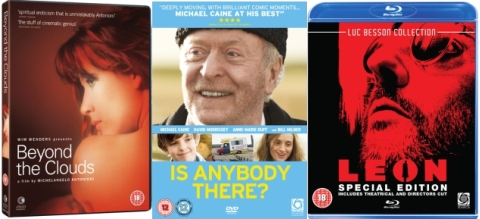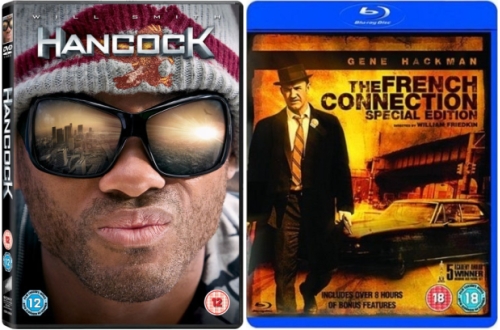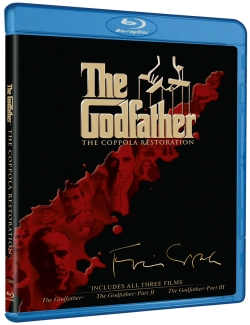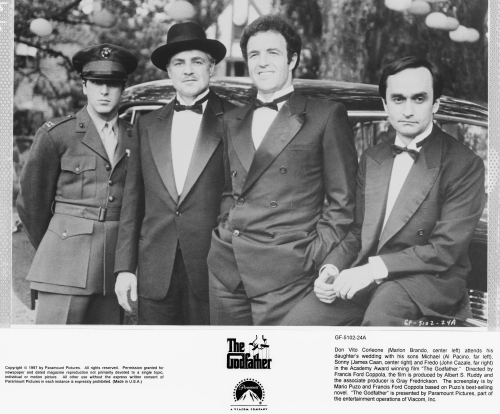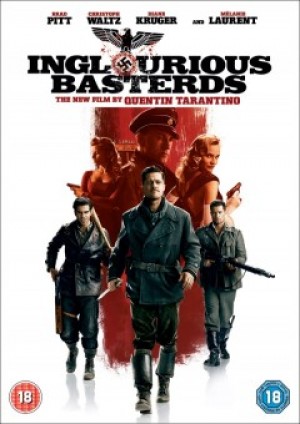 Quentin Tarantino’s latest film Inglourious Basterds (Universal) is a World War II drama set in Nazi-occupied France and available on DVD and Blu-ray in different versions.
Quentin Tarantino’s latest film Inglourious Basterds (Universal) is a World War II drama set in Nazi-occupied France and available on DVD and Blu-ray in different versions.
The story involves a young Jewish woman (Melanie Laurent) who escapes the slaughter of her family by a ‘Jew hunting’ Nazi (Christophe Waltz); a group of commandos known as ‘The Basterds’ led by a Southern lieutenant (Brad Pitt); a British agent (Michael Fassbender) behind enemy lines; a Nazi war hero (Daniel Bruhl) who has become a film star; an German actress double agent (Diane Kruger) and the Nazi high command of Hitler (Martin Wuttke) and Goebbels (Sylvester Groth).
Although it premièred to decidedly mixed reactions at the Cannes film festival back in May, it is one of the most pleasurable cinematic experiences of the year.
Whilst not in the same league as his first two films, it is absorbing, well crafted filmmaking laced with considerable wit and style. From the bravura opening sequence – a homage to The Good, The Bad and The Ugly – involving a Nazi having a drink with a French farmer, is a master class in tension and sets up the rest of the story beautifully.
Much of the film involves characters talking for extended periods and there is a notable lack of conventional action sequences, but this is actually a strength rather than a weakness.
The main reason for this is that the pool of characters here are some of the best Tarantino has ever written and his uncanny eye for the right actor has paid rich dividends here.
It is being sold as a World War II action movie starring Brad Pitt, but this is a much more European flavoured film with a diverse and expertly cast ensemble.
Pitt does well as the head of the Jewish commandos but the real stand outs are Christophe Waltz, who is marvellous as the multi-lingual SS offficer nicknamed ‘The Jew Hunter’ and Melanie Laurent as Shosanna Dreyfus, his Jewish nemeis who ends up owning a cinema in Paris.
One sequence between them, set in a restaurant, is superbly played with an underlying menace and tension that is tweaked quite brilliantly.
To some it will be just more ‘Tarantino speak’, but the context, the use of music and extreme close ups all give it a different texture from what you might expect.
The rest of the cast all do sterling work but special praise must go to Michael Fassbender and Mike Myers for their only scene together – a wonderfully played military briefing which is hilarious, although it could be a litmus test for those who love or hate this film.
Going in you might expect this to be mostly about the Basterds killing Nazis, but that is only one slice of the pie, with the real juice of the film being a revenge tale in which even celluloid itself is drafted into the plot.
Whilst much of the discussion about the film will inevitably centre around the director and his reputation, it is worth mentioning the wonderful technical work across the board.
The production values are first rate, with the studio based scenes (shot at Babelsberg Studio outside Berlin) mixed seamlessly with location work and the production design by David Wasco is complemented beautifully by the costumes by Anna Sheppard.
The cinematography by Robert Richardson is beautifully composed and when combined with Tarantino’s style and Sally Menke’s editing makes for some wonderfully snappy and memorable sequences.
Music has always been a strong point in Tarantino’s previous films as he has made a point of never using an original composer and instead inserting previously recorded pieces.
Along with snippets of his beloved Ennio Morricone, he makes great use of David Bowie’s Cat People (Putting Out Fire), the music from The Entity and even a blast of Elmer Bernstein’s theme to Zulu Dawn.
For longtime fans of the director, look out for the now trademark scenes involving feet, a Mexican stand off, close ups of food (think cream rather than Big Kahuna burgers) and numerous references to films throughout.
At 153 minutes maybe some of it could have been cut a little bit more (one sequence in a bar seems to have been trimmed slightly since Cannes) but the fact is that I never looked at my watch during the film – it had me absorbed and each chapter rolling into the next was a pleasure.
Mainstream audiences may get put off by the use of subtitles (attractive yellow ones as it turns out) used in much of the multi-lingual cast and the fact that Brad Pitt is in it less than the marketing is letting on.
This is a film that exists very much in its own world, as you will see when it gets to the climax, but it is such a rich and lovingly created one that avoids the pitfalls of many movies set in World War II.
It is as much about our perceptions and fantasies of that war than it is about the actual war itself. In terms of where this fits into the director’s career, I don’t think Quentin Tarantino will ever top the expectations Pulp Fiction forced on him.
Since the enormous critical and commercial success of that film he seemed to be indulged at Miramax (which, to be fair, his success helped shape) and perhaps he hasn’t had the creative tension down the years that he needed.
His last couple of films – despite undoubted qualities – seemed to be showing an artist retreating into his own self-referential head.
Grindhouse marked the point where he seemed to be chasing his own pop culture tail and this was paralleled by the commercial misfires at the newly formed Weinstein Company.
With this film they have partnered with Universal and interestingly this is the first time Tarantino has worked with a major studio as writer-director. Maybe this has given him a new sense of responsibility and helped him creatively.
Certainly Inglourious Basterds is a refreshing change of pace from the crime and exploitation influenced work he had been doing of late.
The single-disc DVD release which offers the following features:
- 2.40:1 Anamorphic Widescreen
- English and Hungarian DD5.1 Surround
- English SDH, Arabic, Danish, Finnish, Hungarian, Icelandic, Norwegian and Swedish subtitles
- Extended and Alternate Scenes
- Nation’s Pride – the film within the film can be seen in its entirety
- Inglourious Basterds Trailers
And here are the Blu-ray Disc details:
- 1080P 2.40:1 Widescreen
- English 5.1 DTS-HD Master Audio
- French and Spanish (Latin American) 5.1 DTS Surround
- English SDH, French and Spanish (Latin American) subtitles
- Extended and Alternate Scenes
- Nation’s Pride – the film within the film can be seen in its entirety
- Featurettes on Nation’s Pride
- Roundtable discussion with Quentin Tarantino, Brad Pitt and film historian/critic Elvis Mitchell
- A conversation with veteran actor Rod Taylor
- Film Poster Gallery Tour with Elvis Mitchell and more
Considering the audio specs, the UK release should be similar to the US version with extras also featuring:
- Domestic and International Trailers
- The Original Inglorious Bastards – a salute to the original 1978 film
- Rod Taylor on Victoria Bitters, the Australian beer
- Quentin Tarantino’s Camera Angel
- Hi Sallys – Gag Reel
- Inglourious Basterds Poster Gallery
There is also a limited edition Blu-ray Disc which has the following:
- Collectable special finish slipcase and includes:
- Inpack 4 Stoltz Der Nation poster images
- 3 Bridget Von Hammersmack Film Poster images
- Replica image of the Japanese Teaser Poster
- Exclusive James Goodridge key art print
- Momma Landa’s Old Fashion Austrian Strudel Recipe.
The running time of the extras on Blu-ray is 90 mins.
> Buy Inglourious Basterds on DVD, Blu-ray Disc or the Limited Edition Blu-ray Disc
> Inglourious Basterds at the IMDb
